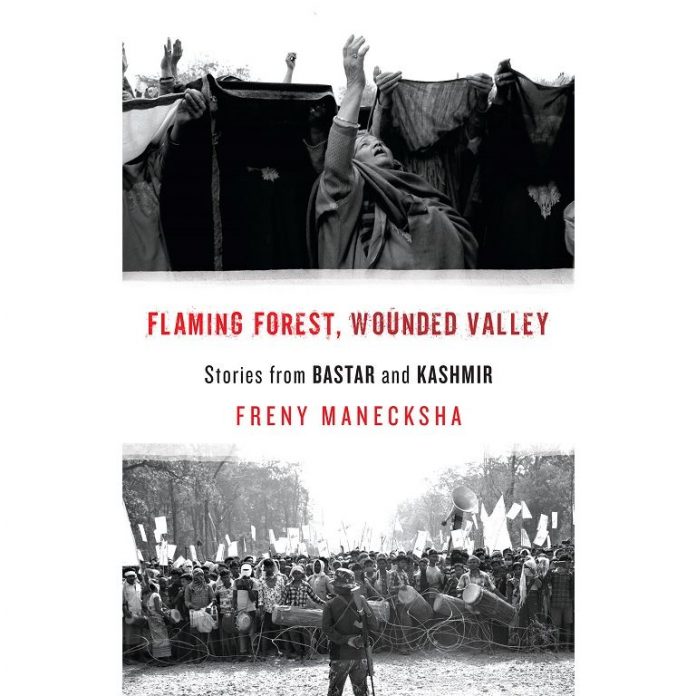A new book ‘Flaming Forest, Wounded Valley: Stories From Bastar and Kashmir’ by author and journalist Freny Manecksha investigates how places can be drastically changed and turned into battlefronts. The book compiles stories of people from the heavily militarised regions of Bastar and Kashmir.
Muhammed Nihad PV | TwoCircles.net
NEW DELHI — A new book by author and journalist Freny Manecksha has trained its focus on Kashmir and Bastar, two regions which are beset with political instability, militarization, violence and erosion of rule of law. The book titled ‘Flaming Forest, Wounded Valley: Stories From Bastar and Kashmir’, came out in July this year and is the author’s second book.
The book is an investigative account of how places and spaces can be radically altered amid long periods of violence and conflict and become battlefronts. The book does this by compiling stories of people fighting this change in Kashmir and Bastar.
With extensive reportage, which took the author several years, the book investigates how “concepts of home as a safe and inviolate place, courts as gateways to justice and inherent rights to livelihood, movement and human dignity, undergo a profound change.”
It was in 2010 when Maharashtra-based journalist Freny Manecksha started her series of journeys to different regions of India in order to “know more about the people’s uprisings and movements (taking place there).”
She travelled to Bastar in Chattisgarh, Odisha and Kashmir several times. In her words, she travelled to these places “where crucial struggles for survival are taking place”. In 2017, her first book titled “Behold, I Shine” was published by Rupa publications. The book is a narrative account of the struggles of Kashmir’s women and children during three decades of violent conflict. The new book, published by Speaking Tiger, presents “the accounts of killings, arrests, torture and displacement faced by the peoples of Bastar and Kashmir.”
The book presents an account of what happened when a siege was laid in Kashmir (referring to the reading down of Article 370 on August 5, 2019).
The book looks at “how did communities withstand the months and months of shutdown?”
Reporting from Chattisgarh, the book looks at “how Adivasis were impacted when they were forced to leave the forest and ordered by the Chhattisgarh government to live in makeshift camps by the roadside or else be outlawed?”
The book aims to speak to the urban middle-class India, which as per the author, “is frequently shielded from violence and has little understanding of what it means to live in areas where a country’s politics have a significant impact.”
“In Bastar, Chhattisgarh, media spaces are very tightly controlled. More than 91% of news coverage on the conflict with Maoists is state driven. Most reports emanate solely from police and other security forces. Just a brave handful can go into the forests and listen to those Adivasis who may contest it,” Manecksha told TwoCircles.net.
Speaking about the role of journalists in reporting on conflict, Manecksha said, “In Kashmir, a once vibrant media is now hindered by a new media policy which does not allow the press persons to cover gunfights. How does one challenge the singular voice of authority, of the state that continues to nurture the monopoly of deciding what is in the public interest? This is our greatest responsibility as journalists, storytellers and truth-tellers.”
By telling stories of ordinary people and their struggles against injustice, the book aims to “celebrate the idea that heroic deeds are performed by ordinary people.”
Muhammad Nihad PV is a sociology student at the University of Hyderabad. He tweets at @nihadbinnisar


